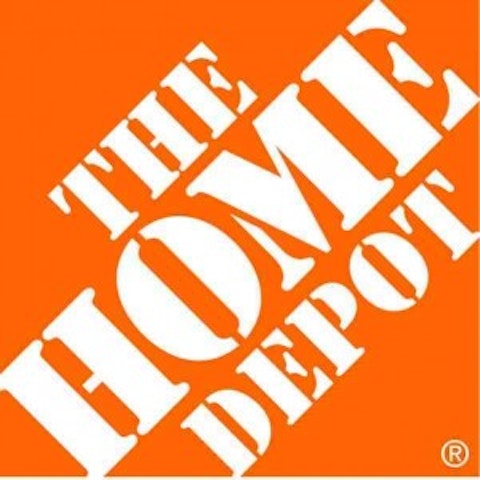The Home Depot, Inc. (NYSE:HD), the largest home improvement retailer in the country, has been a favorite with the investors. Its stock price has grown by over 197% since July 2010, defying the plunge in residential housing construction and the overall economic weakness. Presently, The Home Depot, Inc. (NYSE:HD)’s strong presence in key housing markets like California and Florida and its growth strategies positions it very well for the housing recovery that is underway.

Americans have finally started buying homes. It is true that interest rates are rising but they have not yet increased enough to deter home buyers. In fact, the increase is encouraging home buyers to lock in current interest rates before they climb further.
The inventory of homes up for resale is also below the median line. The Home Depot, Inc. (NYSE:HD) estimated the national inventory to be around four to four-and-a-half months compared to the six months that’s considered normal. This is pushing up property prices and again urging potential buyers to buy their homes before prices increase further.
Both new construction and re-sales are revenue drivers for The Home Depot, Inc. (NYSE:HD). The former triggers the sale of goods like paint, lumber, furniture, and appliances, while the latter fuels the demand for home improvement products. People often repair their houses before offering them for sale, and buyers typically customize houses once they have moved in. The Home Depot, Inc. (NYSE:HD) estimates that each sale of used home creates a revenue opportunity of approximately $3,500.
Presence in strong markets
The Home Depot, Inc. (NYSE:HD)’s presence in markets such as California and Florida is proving to be advantageous for the company. In the first quarter, it was able to avoid some of the weather woes that dented sales of most retailers due to its presence in these markets where the weather was better.
California and Florida are also the hub of current construction activities. California has one of the lowest inventories of houses up for sale in the country with an estimated three-and-a-half months of supply. Meritage Homes Corp (NYSE:MTH), a single family home builder that is active in this market, saw a 68% uptick in new orders during the first quarter and a 27% increase in average selling price. In Florida, it saw a 58% increase in new orders and a 30% increase in average selling price.
Meritage Homes Corp (NYSE:MTH), which builds in the West and Southwest, saw an 89% increase in its order backlog at the end of the first quarter. The company expects these trends to continue and is looking at an average home closing revenue increase of 40%-45% throughout the remaining quarters of the fiscal year. Home Depot has around 232 stores in California and about 153 in Florida and this high density is a big advantage in current times.
Good strategies
Home Depot has improved its supply-side equations and increased its product assortment in key categories like appliances and paint. It is showcasing a complete product range in appliances which was earlier not there due to lack of big vendors and the effect is already visible in sales numbers. Meanwhile, in the core paint business, Home Depot’s innovations are opening up new opportunities, especially with its professional customers.
The professional business is a good growth driver and a bigger play on the housing recovery than the general consumer segment. During the recession, the professional segment had dropped at a higher pace than the consumer segment and now with housing recovery, the rise is also at a faster pace. Home Depot has taken efforts over the years to grow this business to its current size, where it accounts for around 35% of total revenue.
The company’s other focus area is customer satisfaction. It is optimizing tasks to ensure that around 60% of total employee hours are devoted to customer-facing jobs.
Competitive advantage
Home Depot’s closest rival is Lowe’s Companies, Inc. (NYSE:LOW), and it has been out-comping the latter by 400 to 500 basis points in the past few quarters. It has also taken some of market Lowe’s share through marked improvements in customer service, increased product assortment, and other smart strategies.
Lowe’s Companies, Inc. (NYSE:LOW) is in the middle of a big inventory reset initiative, and will take some time to settle down. Home Depot has two big advantages over it, which the former is trying to narrow.
Lowe’s is not as exposed to big housing markets like California; its store count of 110 in the state is less than half that of Home Depot’s. It is looking to resolve this by attempting to acquire a West Coast hardware chain called Orchard Supply Hardware and take over 60 of the latter’s 91 locations in strategic areas. Taking its cue from Home Depot, Lowe’s is also trying to broaden its professional business.
Lowe’s will eventually become a stronger rival, but until then Home Depot remains at an advantage.
Last word
Home Depot has built a solid base to capitalize on the housing recovery. It already has a geographic advantage. With a sizable portion of the business coming from professional customers, a solid product assortment, and a focus on customer satisfaction, the company should see solid growth momentum over the coming years. It’s true that the stock is not cheap as it is trading at almost 25 times its earnings, but given its future potential the valuation is justified.
The article Home Depot Is Poised for Growth originally appeared on Fool.com and is written by Eshna De.
Eshna De has no position in any stocks mentioned. The Motley Fool recommends Home Depot, Lowe’s, and Meritage Homes. Eshna is a member of The Motley Fool Blog Network — entries represent the personal opinion of the blogger and are not formally edited.
Copyright © 1995 – 2013 The Motley Fool, LLC. All rights reserved. The Motley Fool has a disclosure policy.




